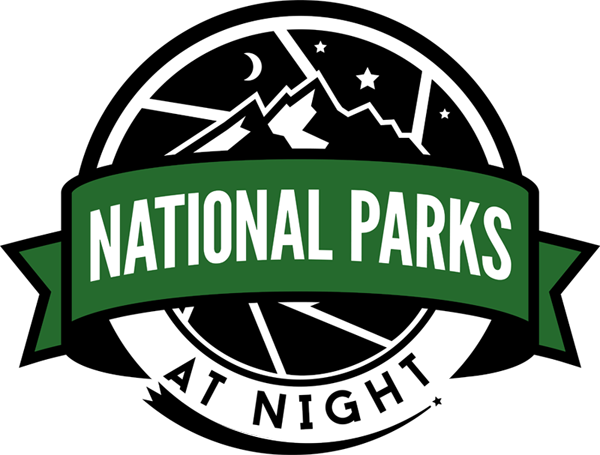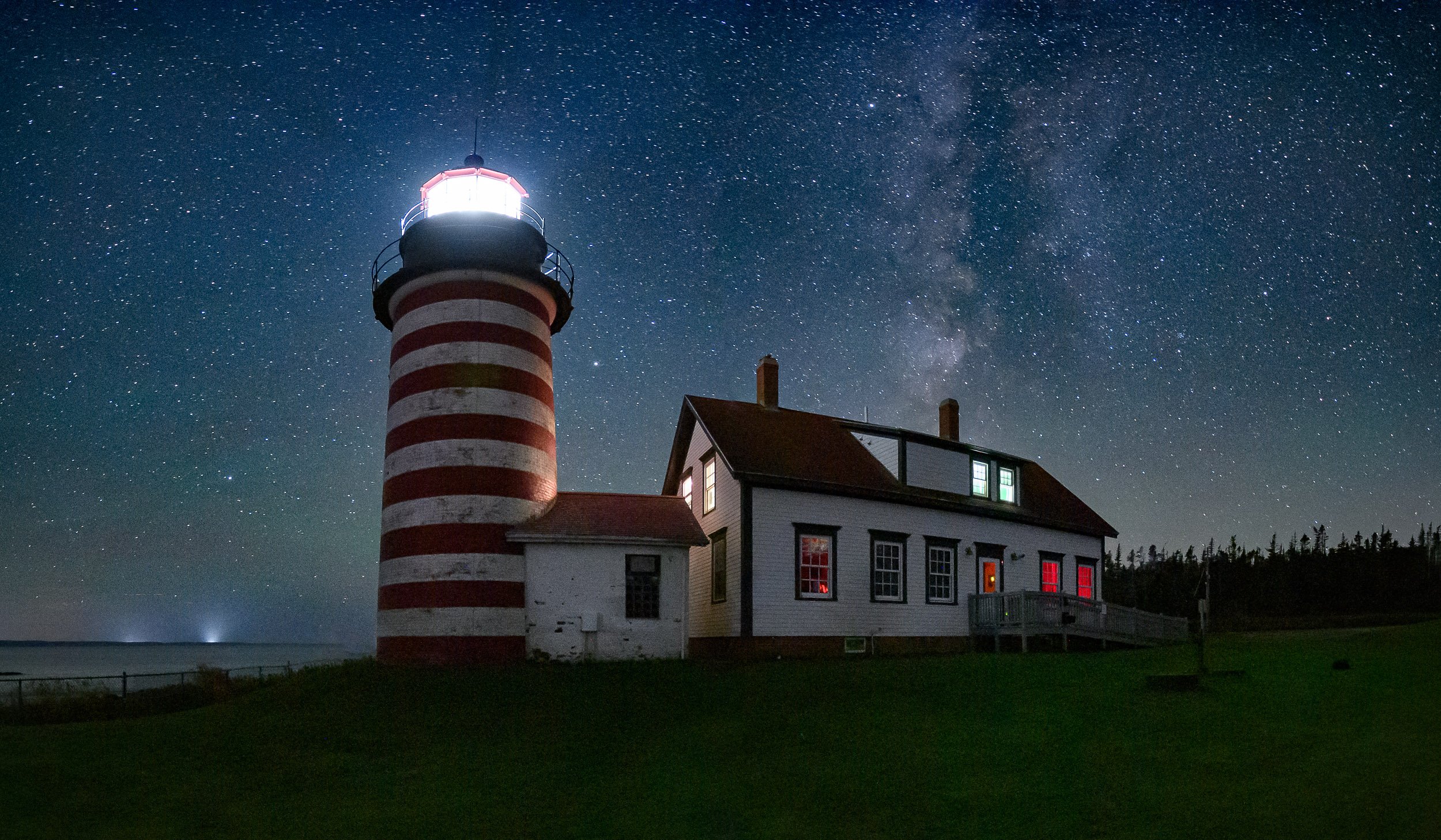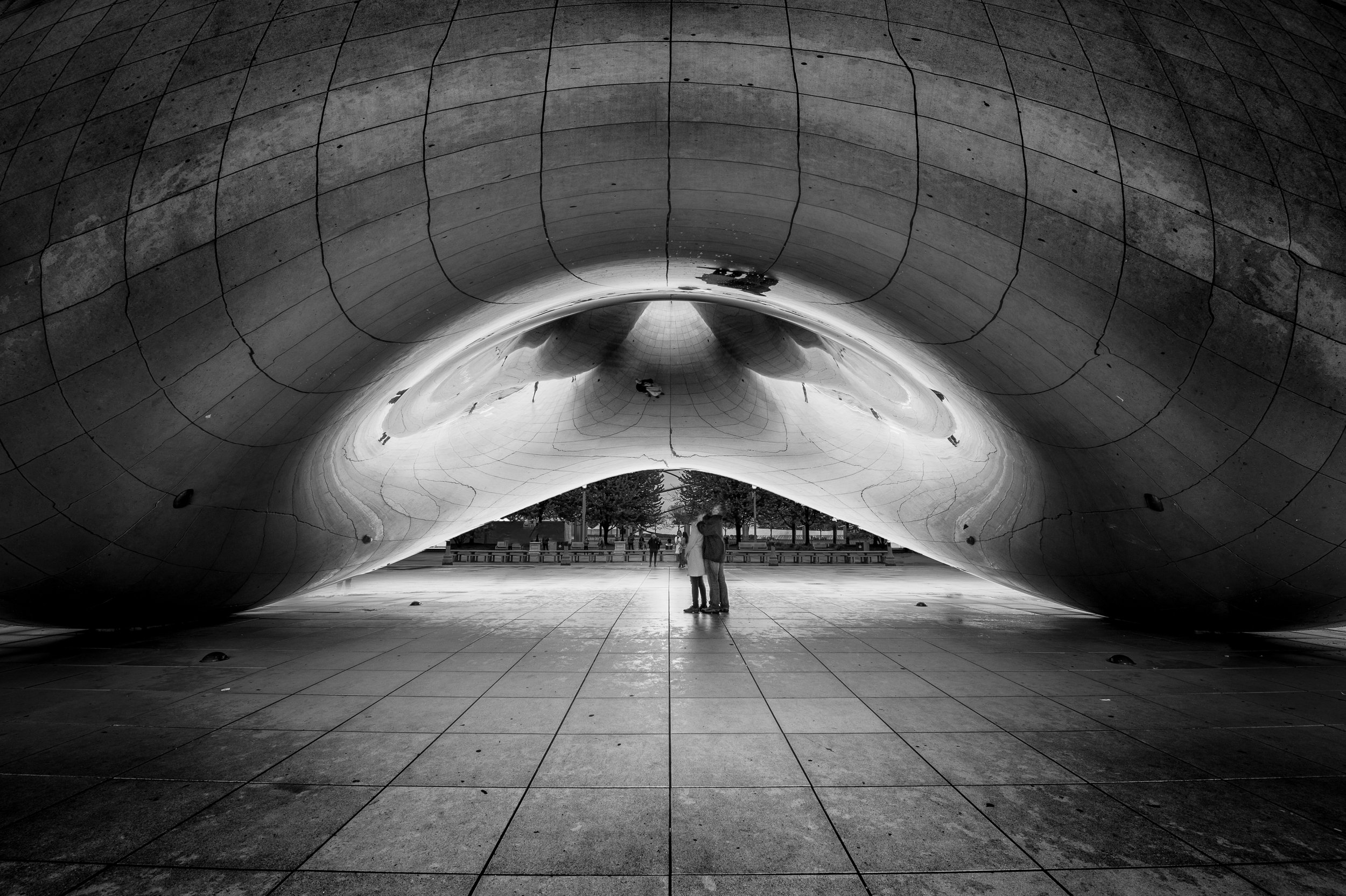One of my favorite experiences last year was the Eastern Sierra workshop we ran in California with Rocky Mountain School of Photography. What made this one so extraordinary is that it offered a variety of subjects and ways to interpret the night. Most of us were excited about the surreal “rockscapes” of the Alabama Hills or the ghost town train depot at Laws. But for me? I couldn’t wait to photograph the Owens Valley Radio Observatory (OVRO) in Bishop.
The Location
The Owens Valley Radio Observatory. Nikon Z 6 with a Nikon Z 24-70mm f/4 lens. 15 seconds, f/5.6, ISO 1600.
I’ve been to a few observatories, but to get a close-up look at these huge telescopes was a night photographer’s dream come true.
We had only one night scheduled at OVRO, and I had so many ideas I wanted to explore. Let’s just say I was stressfully excited! Two images I wanted to create were a time-lapse and a 2-hour-plus star trail shot of the telescopes. Unfortunately, as soon as I arrived I noticed that the cloud cover would prevent any long star trails from happening.
However, clouds can work very nicely in a time-lapse, as they are another moving element to capture as part of the scene. After all, time-lapses are all about movement.
Then I saw that the largest of the telescopes—a 40-meter beauty—was actively scanning the skies. Perfect. More movement!
The Shoot
I set up my Nikon Z 6 with a Z 24-70mm f/4 lens a couple of hundred yards away, so that I could include the sky patterns as well as the moving telescope.
However, in my excitement, I made a couple of critical errors with this first attempt. First, I defaulted to my typical vertical camera orientation, which worked for the single frame, but for time-lapse (or any video) you really want horizontal (unless you’re going to view it only on a phone).
Second, I was in a very “single frame” mindset instead of thinking about the many frames it takes to create a time-lapse. My exposures were 2 minutes, f/5.6, ISO 100. The 2 minutes was the issue. With time-lapses, you need a lot of single frames to make the “movie,” which means you generally want shorter (and therefore more) exposures. I didn’t do the time-lapse math prior to setting up my shot.
When creating a time-lapse, you need to work backward a bit. Before shooing, think about how long you want the video to be. For instance, if I wanted to make a 15-second time-lapse using a “normal” video playback of 30 frames per second, then I would have needed 450 frames. With 2-minute exposures, that would take 15 hours of shooting! Shorter exposures (say, from 10 to 30 seconds) are generally better, especially if you will be at a location for only a few hours.
Instead, I ended up with 91 vertical 2-minute images. I assembled them quickly in Photoshop and used a rate of 12.5 frames per second, which gave me a decent 7-second time-lapse that you can see in Figure 1.
Figure 1. My first attempt.
I do like that the longer exposures worked well with the lesser frame rate to slow things down a bit—that really lets you see the motion of the telescope, clouds and car trails.
The Reshoot
As luck would have it, we had another opportunity to photograph at OVRO on this trip. Reshoots are amazing! Given this second chance, I wanted to learn from my mistakes and do a better job.
First, I had to figure out the best horizontal composition. The skies were clear and full of stars. Without the clouds moving through the scene, I composed for a closer look at the main actor, the 40-meter telescope.
Next, I needed to figure out a shorter exposure. The moon was out, so a shutter speed of 8 seconds was definitely attainable. It would take about 800 shots in 2 hours to capture the assets needed to create a 30-second time-lapse. If you need help figuring out the math for a time-lapse, our savvy friends at PhotoPills have a pill for that (Figure 2).
Figure 2. PhotoPills has a calculator for seeing how many frames are needed to create time-lapses of different lengths.
My final exposure was 8 seconds, f/5.6, ISO 1600. I set my Z 6 to Bulb mode, and I set up my Vello Shutterboss II with a 1-second interval between shots. I let it rip for a little over 2 hours, which gave me 835 exposures to work with.
The Post-Production
My video editing skills are definitely basic—I’m really a still photographer, not a videographer. Fortunately in 2017 Adobe added a time-lapse feature to Photoshop, which is software that I’m very comfortable using.
Here’s what I did:
1. I exported my selects from Lightroom as JPGs, making sure my filenames were sequentially numbered—i.e., OVRO_1, OVRO_2, OVRO_3, etc. (There should be no breaks in the numbering.) Under Image Sizing, you want to check the Resize to Fit box and enter either 1920 pixels wide for an HD video or 3,840 pixels wide for 4K. I chose the latter.
2. In the Photoshop menu, I chose File > Open, which opens the dialog we use to get things started (Figure 3). I navigated to the folder of time-lapse JPGs and selected the first one. I checked the Image Sequence box, then pressed Open.
Figure 3.
3. For a frame rate, 30 is considered best practice for digital video. However, you can choose a lower or higher frame rate to slow things down or speed things up. It’s easy to experiment and cook to taste. I chose 24 for this time-lapse.
4. The files were quickly put together as one video layer in Photoshop. I clicked on Window > Timeline to open the timeline bar in Photoshop (Figure 4).
Figure 4.
5. I pressed the space bar on my keyboard to watch the time-lapse play slowly. Typically only one play is required to buffer the video.
6. You can do basic editing like adding music, cross-fades, etc., but I didn’t add any visual bells and whistles, preferring to keep this time-lapse simple.
7. Exporting requires a few key steps. I selected File > Export > Render Video. The Render Video window (Figure 5) is pretty self-explanatory. Name your file, then choose where to save it. You can select a settings preset to suit your needs. The presets are helpful for automatically resizing your video to fit the various formats of YouTube, Vimeo, and Android and Apple Devices. I used Adobe Media Encoder.
Figure 5.
That’s it. A quick and easy way for me to assemble a time-lapse.
As you can see with this second one, the improved frame rate created smoother and more realistic movements within the video.
Figure 6. The final time-lapse.
Wrapping Up
A dark-sky time-lapse is an amazing way to seize the night. I was thrilled with the experience and felt that the OVRO was a perfect subject to really show the passing of time and the search for life beyond the stars!
Like I mentioned before, I’m not a seasoned video guy, so I used Photoshop to tackle this, as it’s software that I’m already comfortable with. But there are other options out there. One in particular I’m excited to delve into is LR/Timelapse, partly because it eliminates some of the steps above by allowing you to go from Lightroom directly into the rendering software. Stayed tuned to our blog for more on that later this year.



